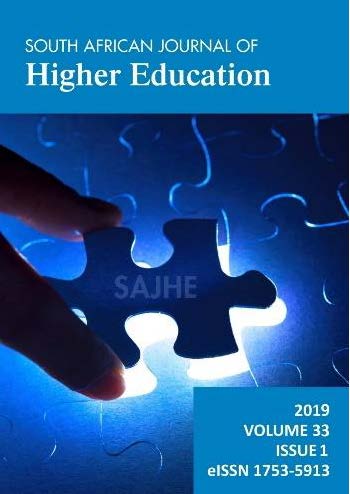Multimodal mapping: Using mind maps to negotiate emerging professional communication practices and identity in higher education
DOI:
https://doi.org/10.20853/33-1-2758Abstract
Mind or concept maps have long been viewed as helpful tools to plan texts. The pedagogical focus is often focused on the end product as material artefact, with less pedagogical or assessment attention being paid to the process of mind mapping. A process-product approach to text and text-in-use can fulfil a variety of pedagogical goals that allow participants in a professional communication course to collaboratively negotiate meaning-making. By presenting mind maps in class and receiving immediate peer feedback, students have the opportunity to redesign their work to enhance understanding. This article uses a multimodal social semiotic approach as well as the notion of authorial stance (defined multimodally) to analyse a mind map, as both artefact and presentation. The analysis shows how a particular student transforms her work and thinking during in-class engagement. Besides turn-taking and experiential participation as communicator and audience, this negotiation of meaning-making contributes to graduate work-readiness. We argue that these scaffolding and scaffolded activities act to engage student identity formation as emerging professionals for the workplace.
Downloads
References
Author 1 2014.
Author 1 2012.
Author 1 and XX. 2011.
Bernstein, B. 2000. Pedagogy, Symbolic Control and Identity: Theory, Research and Critique. Revised ed. Lanham: Rowman and Littlefield.
Bezemer, J. and Kress, G. 2008. “Writing in Multimodal Texts: A Social Semiotic Account of Designs for learning.” Written Communication 25, no. 2: 166–195.
Buzan, T. 1991. Use Both Sides of Your Brain: New Mind-Mapping Techniques to Help You Raise All Levels of Your Intelligence and Creativity, Based on the Latest Discoveries of the Human Brain. New York: Plume.
Candlin, N.C. and Hyland, K., eds. 1999. Writing: Texts, Processes and Practices. London and New York: Longman.
De Groot, E.B. 2008. English Annual Reports in Europe. A Study on the Identification and Reception of Genre Characteristics in Multimodal Annual Reports Originating in the Netherlands and the United Kingdom. PhD diss., Radboud University Nijmegen.
Cope, B. and Kalantzis M., eds. 2000. Multiliteracies: Literacy Learning and Design of Social Futures. London and New York: Routledge.
Fogler, H.S. and Le Blanc, S.E. 1995. Strategies for Creative Problem Solving. New Jersey: Prentice-Hall.
Fairclough, N. 1995. Critical Discourse Analysis: The Critical Study of Language. London: Longman.
Gallimore, R. and Tharpe, R. 2002. Vygotsky and Education. Cambridge: Cambridge University Press.
Gee, J.P. 2004. Situated Language and Learning. New York and London: Routledge (Taylor & Francis Group).
Gee, J.P. 2008. Social Linguistics and Literacies: Ideology in Discourses. 3rd edition. London and New York: Routledge (Taylor & Francis Group).
Author 2. 2008. Author 2, and XX 2015.
Author 2. 2010.
Author 2. 2012.
Halliday, M. 1978. Language as Social Semiotic: The Social Interpretation of Language and Meaning. Great Britain: Edward Arnold.
Halliday, M. 1994. An Introduction to Functional Grammar. London: Edward Arnold.
Hyland, K. 1999. “Disciplinary Discourses: Writer Stance in Research Articles.” In Writing: Texts, Processes and Practices, edited by C.N. Candlin and K. Hyland. London and New York: Longman.
Hyland, K. and Tse, P. 2004. “Metadiscourse in Academic Writing. A Reappraisal.” Applied Linguistics 25, no. 2:156–177.
Jewitt, C. 2006. Technology, Literacy and Learning. A Multimodal Approach. Oxon: Routledge.
Jewitt, C., ed. 2014. ed. The Routledge Handbook of Multimodal Analysis. Oxon, New York: Routledge.
Jones, R.H. 2009. “Technology and Sites of Display.” In The Routledge Handbook of Multimodal Analysis, edited by C. Jewitt. Oxon, New York: Routledge.
Kress, G. and Van Leeuwen, T. 2006 [1996]. Reading Images: The Grammar of Visual Design. London: Routledge.
Kress, G. 2003. Literacy in the New Media Age. London and New York: Routledge.
Kress, G. 2010. Multimodality. A Social Semiotic Approach to Contemporary Communication. Routledge: London.
Lave, J. and Wenger, E. 1991. Situated Learning: Legitimate Peripheral Participation. London: Cambridge University Press.
Norris, S. 2004. Analyzing Multimodal Interaction: A Methodological Framework. New York and London: Routledge.
Olui, W.E., Brusaw, C.T. and Alred, G.J. 2010. Writing that Works. 10th edition. Boston: Beford/St. Martin’s.
Svantessan, I. 1994. Mind-mapping and Memory: Powerful Techniques and Resources to Help you Make Better Use of Your Brain. Guildford: Biddles.
Theron, F. 1994. Better English Better Business. Cape Town: International Business Skills (ISB).
Tharpe, R. and Gallimore, R., eds. 1988. “A Theory of Teaching as Assisted Performance in R. Tharpe and R. Gallimore.” In Rousing Minds to Life: Teaching, Learning and Schooling in Social Context, 42–61. Cambridge: Cambridge University Press.
Vygotsky, L. 1978. Mind in Society: The Development of Higher Psychological Processes. Cambridge. MA: Harvard University Press.
Downloads
Published
How to Cite
Issue
Section
License
This journal is an open access journal, and the authors and journal should be properly acknowledged, when works are cited.
Authors, copyright holders, may use the publishers version for teaching purposes, in books, theses, dissertations, conferences and conference papers.
A copy of the authors' publishers version may also be hosted on the following websites:
- Non-commercial personal homepage or blog.
- Institutional webpage.
- Authors Institutional Repository.
The following notice should accompany such a posting on the website: This is an electronic version of an article published in SAJHE, Volume XXX, number XXX, pages XXX “XXX", DOI. Authors should also supply a hyperlink to the original paper or indicate where the original paper (http://www.journals.ac.za/index.php/SAJHE) may be found.
Authors publishers version, affiliated with the Stellenbosch University will be automatically deposited in the University Institutional Repository SUNScholar.
Articles as a whole, may not be re-published with another journal.
The following license applies:
Attribution CC BY-NC-ND 4.0





